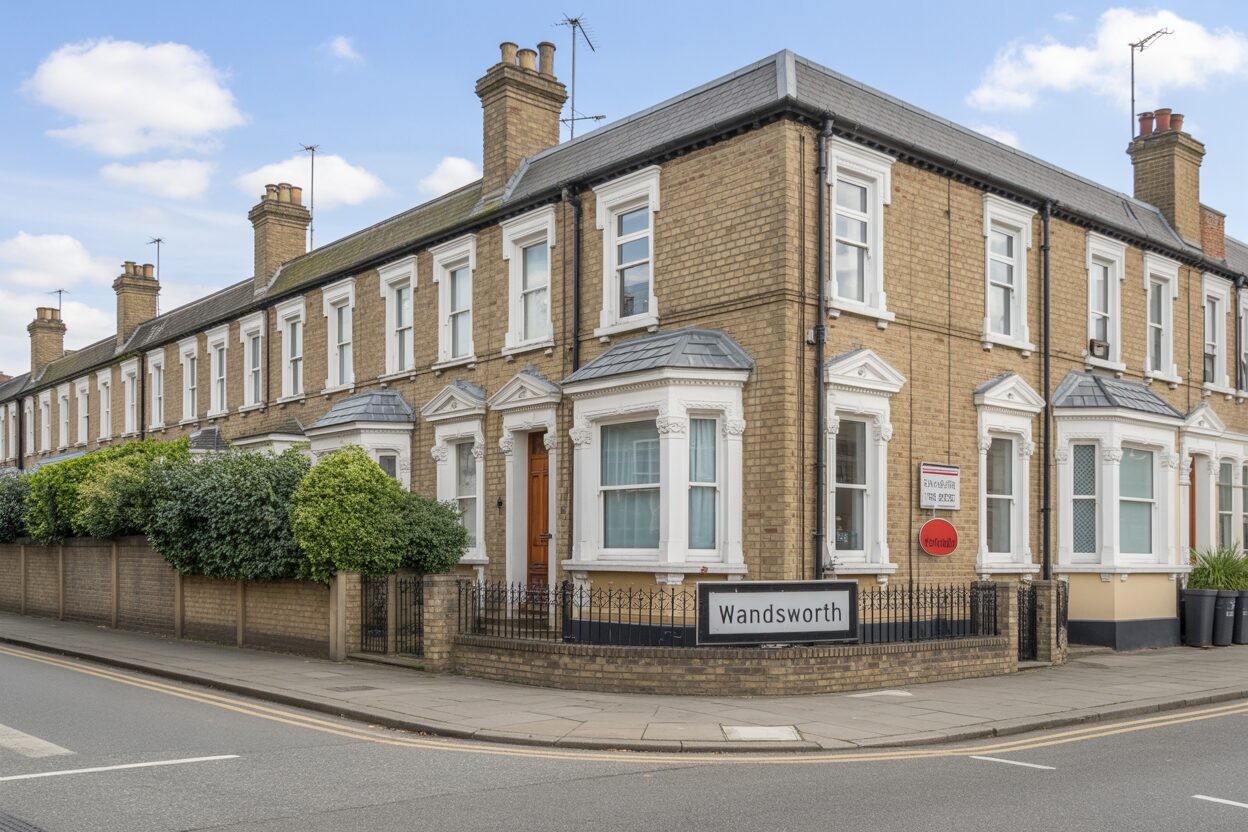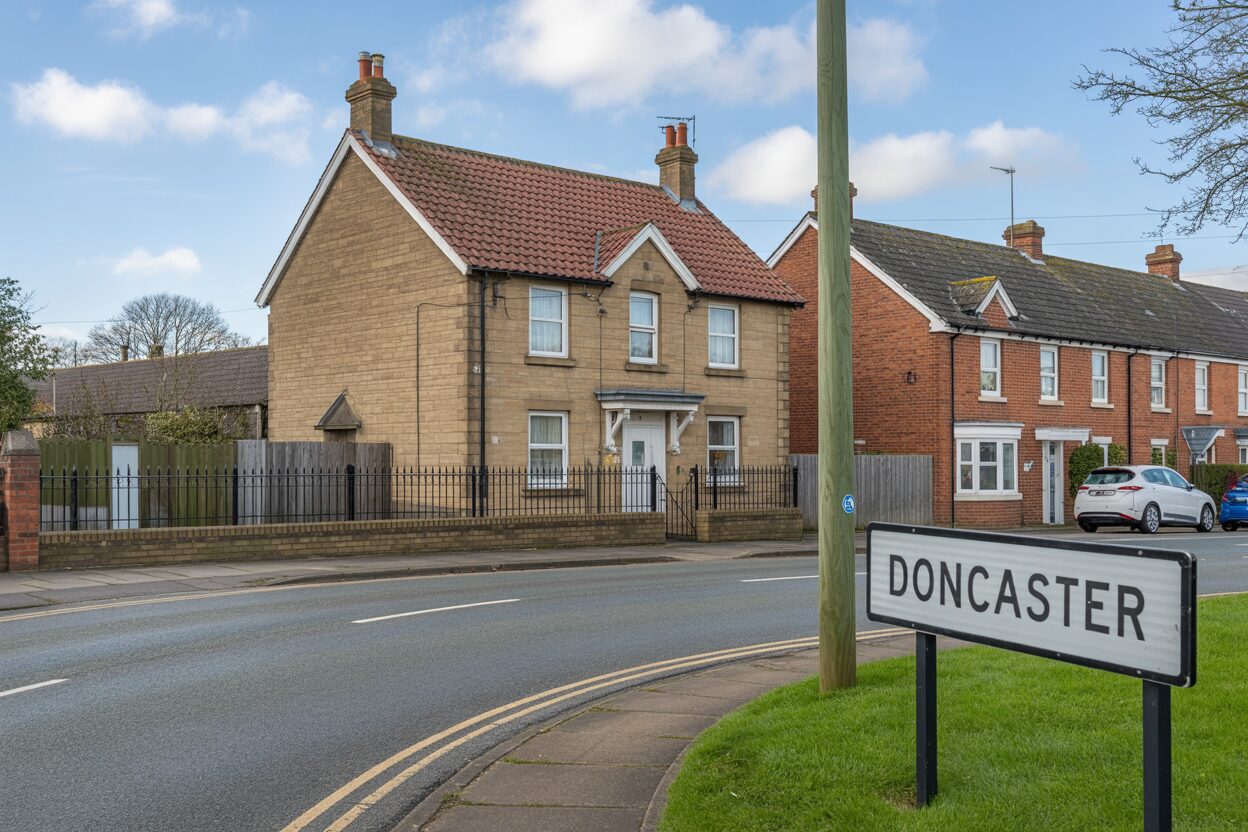
The London Borough of Wandsworth has a thriving HMO and rental property sector. Of the 152,637 dwellings in the borough, a high proportion (54,279) in the rented sector. The council estimates a total of 3,588 houses in multiple occupation across all 22 wards (2.35% of the housing stock). HMO presence is high and more than four times the UK level of 0.69% as measured in the 2021 Census.
In this article, find out the licensing and planning schemes that cover HMOs in Wandsworth.
HMO Architects note: A house in multiple occupation (HMO) is a privately rented property where three or more unrelated people share facilities like kitchens and bathrooms. The legal definition comes from the Housing Act 2004.
HMO property licensing in Wandsworth
There are three property licensing schemes in Wandsworth:
- Mandatory HMO licensing (borough-wide)
- Additional HMO licensing (borough-wide for smaller HMOs)
- Selective licensing (only in specified wards)
Mandatory HMO licensing scheme
Mandatory licensing applies in Wandsworth as it does across England. You must obtain a licence if you let out a large HMO. For licensing purposes, a large HMO is a property that five or more people from two or more households rent who share kitchen or bathroom facilities.
Additional licensing scheme
Councils have the power to introduce additional licensing schemes. This requires landlords of small HMOs (three to six people) to apply for an HMO licence, just like large HMO landlords.
From 1 July 2025 to 30 June 2030, additional licensing applies borough-wide to HMOs across Wandsworth.The scheme covers:
- Shared houses/flats and bedsits occupied by 3–4 people
- Flats in multiple occupation in a purpose-built apartment block with three or more flats
- Self contained flats occupied by 3–4 unrelated people who share the flat’s kitchen or bathroom. A self-contained flat means it has its own kitchen and bathroom inside the unit.
Wandsworth’s additional scheme does not apply to Section 257 HMOs. These are converted blocks that don’t meet the 1991 Building Regulations test. However, if a converted block sits inside a selective licensing designation, each flat will still need a selective licence. Certain exemptions may apply. For clarity, “converted flats” means flats created by splitting an older house or building into separate units.
Selective licensing scheme
Councils can apply a selective licensing designation to defined areas in their jurisdiction. Selective licensing applies only to privately rented properties in these designated wards:
- Furzedown
- Tooting Bec
- Tooting Broadway
- South Balham
This is not strictly a form of HMO licence. It does, however, cover HMOs not subject to mandatory or additional HMO licensing. This includes self contained flats let to a single household or two sharers.
Applying for HMO licensing in Wandsworth
First, choose the type of licensing that’s correct for your property. Then, complete the application form and send in:
- Floor plan with room sizes and amenities
- Gas Safety Certificate
- Electrical Installation Condition Report (EICR), and (where relevant) Portable Appliance Testing
- Fire risk assessment and alarms to LACORS-style guidance (the council’s fire note references HHSRS, LACORS and BS 5839-6)
- Tenancy/management arrangements and waste arrangements
- Planning consent where required (for HMOs with 7+ occupiers or where physical works need permission)
You apply online and pay in two parts: part A at submission (this covers processing and checks) and Part B when the council grants your licence.
The fees are as follows:
| Licence type | Part A | Part B | Total fee |
| 3-bed mandatory | £1,000 | £647 | £1,647 |
| 4-bed mandatory | £1,056 | £647 | £1,703 |
| 5-bed mandatory | £1,112 | £647 | £1,759 |
| 6-bed mandatory | £1,168 | £647 | £1,815 |
| 7-bed mandatory | £1,224 | £647 | £1,871 |
| 8-bed mandatory | £1,280 | £647 | £1,927 |
| 9-bed mandatory | £1,336 | £647 | £1,983 |
| 10+bed mandatory | £1,392 | £647 | £2,039 |
| Selective | £510 | £340 | £850 |
| Additional HMO | £870 | £580 | £1,450 |
The following discounts are available:
| Discount type | Selective licence | Additional licence | Mandatory licence |
| Multi-dwelling | £100 off part A | £100 off part A | £100 off part A |
| EPC rating B or above | £100 off part B | £100 off part B | £100 off part B |
| EPC rating C | £50 off part B | £50 off part B | £50 off part B |
| Provision to Social Rented Sector | £100 off part B | £100 off part B | £100 off part B |
| Gold Standard | £136 (40%) off part B | £232 (40%) off part B | 40% off part B |
| Accredited landlord | £100 off part B | £100 off part B | £100 off part B |
Applying for HMO planning permission in Wandsworth
There are two types of HMO planning permission in Wandsworth:
- C3 (dwellinghouse) to C4 (small HMO, 3 to 6 people): This is a permitted development under planning laws that does not require permission. You must meet requirements on kitchens, bathrooms and communal spaces. Exceptions include projects where physical works like extensions, dormers and loft conversions trigger the need to seek approval.
- Any current use class (including C3) to sui generis (for HMOs, 7+ people): This always needs planning permission
There are eight Article 4 Directions in Wandsworth. However, none remove the C3 to C4 conversion permitted development right. However, some of the work you plan to do when converting a property to HMO may need approval. Check with your architect.
Make sure the amenities you provide for tenants in your HMO comply with council guidelines. Not following these rules will almost certainly result in a failed application.
As part of their Local Plan, Wandsworth Council requires developers to show that:
- The HMO won’t harm the character of the neighbourhood
- The scheme won’t create an overconcentration of HMOs
- The development won’t reduce the supply of family-sized homes
- The site has good access to shops, services and public transport
Political and planning temperature in Wandsworth
The introduction of additional licensing and selective licensing in key hotspots shows growing concern among councillors and planners about poor housing standards. To get the message home to landlords, the council has also publicised recent enforcement cases to signal how it will act where standards are not met. Landlords should expect continued use of civil penalties, inspections and Rent Repayment Orders where required.
The council and politicians recognise the important role of HMOs in the borough. Present a good proposal and the planners will listen to you. Prepare to address local concerns like neighbourhoods losing their identity as they become concentrated HMO clusters.
HMO Architects: partner to landlords, developers and investors in Wandsworth
Wandsworth is an excellent location for HMO landlords and developers to invest in. There are already a high number of HMOs in the borough and the local planning committee is generally favourable to conversions and new developments. The key is picking a location where the introduction of a new HMO won’t upset the balance in a community.
HMO Architects has worked with hundreds of investors, developers and landlords across the capital. Here are three of our most recent HMO success stories:
- Fortescue Road, London (6 units): We secured approval for an unusual ground-floor extension and added a dormer under permitted development. This was part of a substantial C3 to six-bed C4 HMO conversion. Before we started, the property value was £900,000. Now, it’s £1.6m. Rent also more than quintupled to £7,200pcm from £1,400.
- Flat 107, London (4 units): We converted a maisonette above a shop in a conservation area where extensions weren’t permitted. We managed to scale the scheme to four bedrooms and use compact en-suite wet rooms to keep livability high. The result balanced respecting heritage with strictly following compliance rules. We lifted the value of the property from £550,000 to £950,000 and generated £57,600 per annum in revenue for our client.
- Beaufort Ave, London (4 units): We took a standard three-bed terrace and reconfigured it to the highest HMO standards. Our team achieved this without extensions or loft works while upgrading the property’s EPC to a strong C. The job took six months from start to finish. The value of the property rose from £550,000 to £900,000 and the rent from £1,400 pcm to £5,600.
Whether this is your first time investing in HMOs or you’re building a portfolio, HMO Architects offers a complete service to clients. Ask us about our:
- Investment strategy calls: Ryan Windsor has helped over 2,200 clients across his career and began building his own extensive property portfolio when was just 17. Ask Ryan about his BRRR method of growing a portfolio fast and about his overall investment strategy.
- Pre-buy and design feasibility studies: Find out how viability your project is by speaking with Giovanni Patania, our Architect Director, and his team. Before you invest time or money, get expert clarity on whether your property idea stacks up.
- Multiple internal experts: Everything you need from before the first brick is laid right up until completion. Find out about out architecture design to building regs and interior design to BR Principal Designer services. Our HMO licensing team has a 97% success rate across 200 different councils.
Check out our detailed HMO legal FAQ, HMO renewal FAQ and find out more about the true cost of unlicensed HMOs on our website. Discover whether HMOs, buy to lets or stocks and shares deliver the best return. When you get in touch, ask Ryan about his BRRR method and how to use it as your investment strategy.
View our range of development finance case studies to see how we’ve helped clients turn their ideas into sound investments. Read customer stories on HMO, flat, holiday let and housing projects.
Call us on 01223 776 997 or email us directly.
Giovanni is a highly accomplished architect hailing from Siena, Italy. With an impressive career spanning multiple countries, he has gained extensive experience as a Lead Architect at Foster + Partners, where he worked on a number of iconic Apple stores, including the prestigious Champs-Élysées flagship Apple store in Paris. As the co-founder and principal architect of WindsorPatania Architects, Giovanni has leveraged his extensive experience to spearhead a range of innovative projects.




